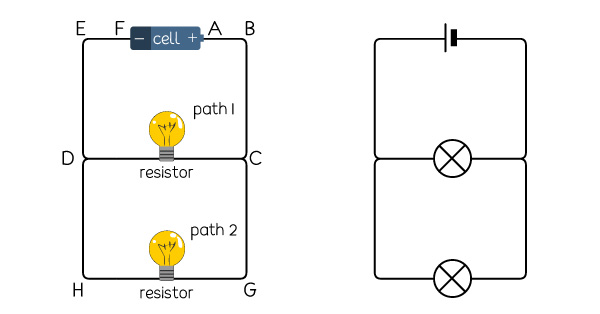- Electricity
Parallel circuits
In a parallel circuit, there is more than one resistor (bulb), and they are arranged on many paths. It means electricity (electrons) can travel from one end of the cell through many branches to the other end of the cell.
Look at the illustration below involving two resistors in a parallel circuit:

You will notice from the above that there is more than one path:
PATH 1: A-B-C-D-E-F and back to A.
PATH 2: A-B-C-G-H-D-E-F and back to A.
From the above, it is clear that electricity from the cell can take either path A or Path B to return to the cell. The great thing about parallel circuits is that, even when one resistor (bulb) burns out, the other bulbs will work because the electricity is not flowing through one path.
Think of all the light bulbs in your home. If one bulb burns out, the other bulbs in the rooms still work.
Another great thing is that the bulbs in a parallel circuit do not dim out like the case in series circuits. It is so because the voltage across one branch is the same as the voltage across all other branches.
